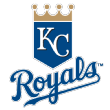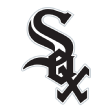With the holiday season upon us, things have slowed down some around baseball. There are still a huge number of free agents available, but let's look at the AL Central and where each team stands in its hunt for the 2017 postseason.
Teams are listed in the order they finished in last season's AL Central standings.
2016: 94-67, +101 run differential, lost World Series
2017 projected record from FanGraphs: 91-71
Key moves so far: signed 1B/DH Edwin Encarnacion
 Of 2016's playoff teams, the Indians probably have the easiest path back to the playoffs, especially after their surprise signing of Encarnacion, who should be at least a two-win upgrade over Mike Napoli. With the White Sox and Twins rebuilding, the Royals seemingly caught in no-man's land and the Tigers standing pat so far from last season, the Indians will be heavy favorites in the AL Central. All they need is for the rotation to stay healthy, a productive return from Michael Brantley and Encarnacion to deliver another 40-homer season. Other than Napoli, outfielder Rajai Davis and reliever Jeff Manship, the Indians have everyone back from the team that nearly won the World Series.
Of 2016's playoff teams, the Indians probably have the easiest path back to the playoffs, especially after their surprise signing of Encarnacion, who should be at least a two-win upgrade over Mike Napoli. With the White Sox and Twins rebuilding, the Royals seemingly caught in no-man's land and the Tigers standing pat so far from last season, the Indians will be heavy favorites in the AL Central. All they need is for the rotation to stay healthy, a productive return from Michael Brantley and Encarnacion to deliver another 40-homer season. Other than Napoli, outfielder Rajai Davis and reliever Jeff Manship, the Indians have everyone back from the team that nearly won the World Series.
What can go wrong? Note that the projection gives them only an eight-win edge over the Tigers, easily within the margin of a little good luck for the Tigers and a little bad luck for the Indians. Carlos Carrasco has qualified for the ERA title just once in his career, so you can't assume 30 starts and 180-plus innings. Danny Salazar missed most of the postseason because of a sore elbow. This is a rotation that leans heavily on Corey Kluber's excellence and durability. Everyone in the bullpen basically had a career year in 2016, though having Andrew Miller for a full season is obviously huge.
The Indians scored 108 more runs in 2016 than they did in 2015, and there is possible regression from Jose Ramirez, Tyler Naquin and Carlos Santana. Naquin actually led the team in OPS, so even with Encarnacion, the offense will rely on Brantley's producing and Francisco Lindor's improving just to remain at its 2016 level.
Key player: Naquin. He hit .296/.372/.514, better than he ever hit in the minors, even though he struck out more than 30 percent of the time. His defensive metrics were terrible. There isn't really another good center-field option, other than Bradley Zimmer in Triple-A, who is a good defender with a strikeout-prone bat. Naquin didn't have a poor defensive reputation coming up, so maybe he's better than the metrics suggest. But if he fumbles again on defense and his bat regresses, the Indians could have a hole in center.
2016: 86-76, +29 run differential
2017 projected record from FanGraphs: 83-79
Key moves so far: Traded OF Cameron Maybin to Angels for P Victor Alcantara
 The Tigers seemed to enter the offseason looking to get a bit younger while trying to contend, but the White Sox's retooling perhaps made them rethink things, and instead, GM Al Avila has sort of been frozen in an indeterminate strategy. The Tigers' high payroll also limits their flexibility.
The Tigers seemed to enter the offseason looking to get a bit younger while trying to contend, but the White Sox's retooling perhaps made them rethink things, and instead, GM Al Avila has sort of been frozen in an indeterminate strategy. The Tigers' high payroll also limits their flexibility.
As such, it's likely that what you see is what you get. That wasn't good enough in 2016, so how can it be good enough in 2017? I think that rests primarily in better run prevention, as it's difficult to see more offense from a strong but aging core of hitters. (One note there: The Tigers were second in the AL in OBP and third in slugging but just sixth in runs, primarily as a result of their being such a poor and slow baserunning team.) It's also difficult to see Justin Verlander and Michael Fulmer pitching much better, though the Tigers can count on 32 or so starts from Fulmer, instead of 24.
The rest of the rotation, however, had a 5.13 ERA. So Brad Ausmus just needs Mike Pelfrey and Anibal Sanchez to pitch well! OK, more realistically, he needs Daniel Norris and Matt Boyd to figure out how to stop giving up so many home runs (a combined 27 in 166 innings). Of course, this all leads to one thing: The Tigers can't go 4-14 against the Indians again.
Key player: Jordan Zimmermann. He has to be a solid No. 3 instead of an injury-prone No. 5 with a 4.87 ERA.
2016: 81-81, minus-37 run differential
2017 projected record from FanGraphs: 79-83
Key moves so far: acquired OF Jorge Soler from Cubs for P Wade Davis; lost FA DH Kendrys Morales and P Edinson Volquez
 A 10-point plan to get the Royals back to the World Series:
A 10-point plan to get the Royals back to the World Series:
1. Mike Moustakas plays 157 games instead of 27.
2. Alex Gordon hits .270/.370/.440 instead of .220/.312/.380.
3. Eric Hosmer produces an .822 OPS -- same as 2015 -- instead of .761.
4. Lorenzo Cain plays 145 games instead of 103, and his OPS doesn't fall 90 points.
5. Jorge Soler hits 25 home runs.
6. Danny Duffy, staff ace.
7. Yordano Ventura has The Big Year Everyone Has Been Waiting For.
8. Find some bullpen depth.
9. Don't go 5-14 against the Indians.
10. Ned Yost devil magic!
Key player: Gordon. The Royals scored 49 fewer runs as offense went up around the league. Gordon had been the one consistent on-base guy in the team's playoff seasons, and though he hurt his wrist, he was struggling before the injury. His strikeout rate increased from 21.8 percent to 29.3 percent.
2016: 78-84, minus-29 run differential
2017 projected record from FanGraphs: 71-91
Key moves so far: traded P Chris Sale to Red Sox for 3B Yoan Moncada, P Michael Kopech and two others; traded OF Adam Eaton to Nationals for Ps Lucas Giolito, Reynaldo Lopez and Dane Dunning; signed P Derek Holland
 Has a sub-.500 team ever traded away its two best players and then made the playoffs? Probably not! We need a dreamlike scenario to get the White Sox to the playoffs -- something like what happened to the Braves in 1991, when they went from last place to first place on the strength of a young rotation that featured Tom Glavine, John Smoltz and Steve Avery. OK, so two of those guys turned into Hall of Famers, but let's not have that distract us from our point: The White Sox have young starting pitching!
Has a sub-.500 team ever traded away its two best players and then made the playoffs? Probably not! We need a dreamlike scenario to get the White Sox to the playoffs -- something like what happened to the Braves in 1991, when they went from last place to first place on the strength of a young rotation that featured Tom Glavine, John Smoltz and Steve Avery. OK, so two of those guys turned into Hall of Famers, but let's not have that distract us from our point: The White Sox have young starting pitching!
Jose Quintana is already one of the best starters in the majors, ranking seventh in WAR over the past four seasons. Carlos Rodon quietly made strides last season by cutting his walk rate from 11.7 percent to 7.6 percent. His fastball/slider combo is tough on lefties, and if the changeup improves, he could be an ace overnight. The two pitchers acquired from the Nationals could also be immediate stars. If Holland or James Shields finds a way to bounce back, you have a five-man rotation that could dominate.
The offense? That's a more ambitious thought process, but Jose Abreu, Melky Cabrera and Todd Frazier are still here, and if Moncada is an immediate star and Tim Anderson learns to draw a walk a week ... hey, we're relying on that rotation and David Robertson and Nate Jones to kill it out of the bullpen. Throw in a weak division, and the White Sox sneak into the playoffs and meet the Cubs in the World Series.
Key player: Moncada. Do they trade Frazier and hand third base to Moncada? Do they start him in Triple-A? Do they try him in center field, where his speed maybe plays up more than the infield? GM Rick Hahn said when the team acquired Moncada that he would start out at second base, but his final position isn't set in stone.
2016: 59-103, minus-167 run differential
2017 projected record from FanGraphs: 75-87
Key moves so far: signed FA C Jason Castro
 Well, that was ugly. But it has been a lot of ugly in Minnesota, with five 90-plus-loss seasons in the past six. The Twins allowed an astonishing 128 more runs than any other AL club. The good news: They scored 722, just below the AL average of 731, so there's obvious hope for the offense.
Well, that was ugly. But it has been a lot of ugly in Minnesota, with five 90-plus-loss seasons in the past six. The Twins allowed an astonishing 128 more runs than any other AL club. The good news: They scored 722, just below the AL average of 731, so there's obvious hope for the offense.
You keep Brian Dozier, Miguel Sano hits 45 bombs, Max Kepler follows his 17-homer rookie season (in 113 games) with 30 home runs, Byung Ho Park adjusts better and hits 30 bombs, and suddenly, you have an offense that is going to hit a ton of home runs. Note as well that Byron Buxton figured things out a bit and hit .238/.315/.497 in 44 games in the second half. If he does that over a full season and plays great defense, he's a valuable asset.
One thing that will help the pitching staff: Castro is regarded as a good pitch framer, whereas Kurt Suzuki was not. Backup Juan Centeno was a disaster, and neither guy was effective throwing out runners. The defense behind the plate alone could easily be worth four or five wins if you believe in the pitch-framing metrics. Improving the defense in left field (minus-22 defensive runs saved, as Robbie Grossman graded out as a disaster, with minus-21 DRS in just 72 games started) and shortstop (a combined minus-17 DRS) will help immensely.
And maybe Joe Mauer posts a .400 OBP.
Key player: Jose Berrios. The youngster posted an 8.02 ERA in 14 starts. Let's hope he wasn't permanently scarred by his first exposure to the big leagues. (He dominated in Triple-A, so there's still hope that the prospect evaluators were correct.)
